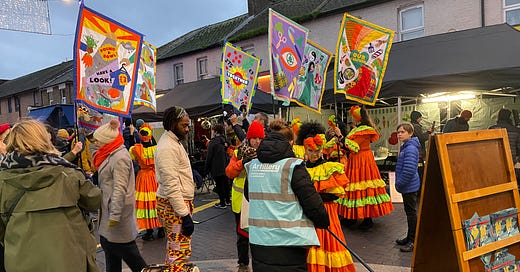STRUGGLE | SOLIDARITY | SOURDOUGH
Are banners having a resurgence? Or is it just that since living in William Morris’ birthplace I’ve started seeing them more?
When I say banners, I don’t mean the 728x90 pixel ones, but the soft fabric signs which have their roots in the medieval guilds of Europe. Each guild had its own banner, featuring iconography relevant to their trade and geographic…


